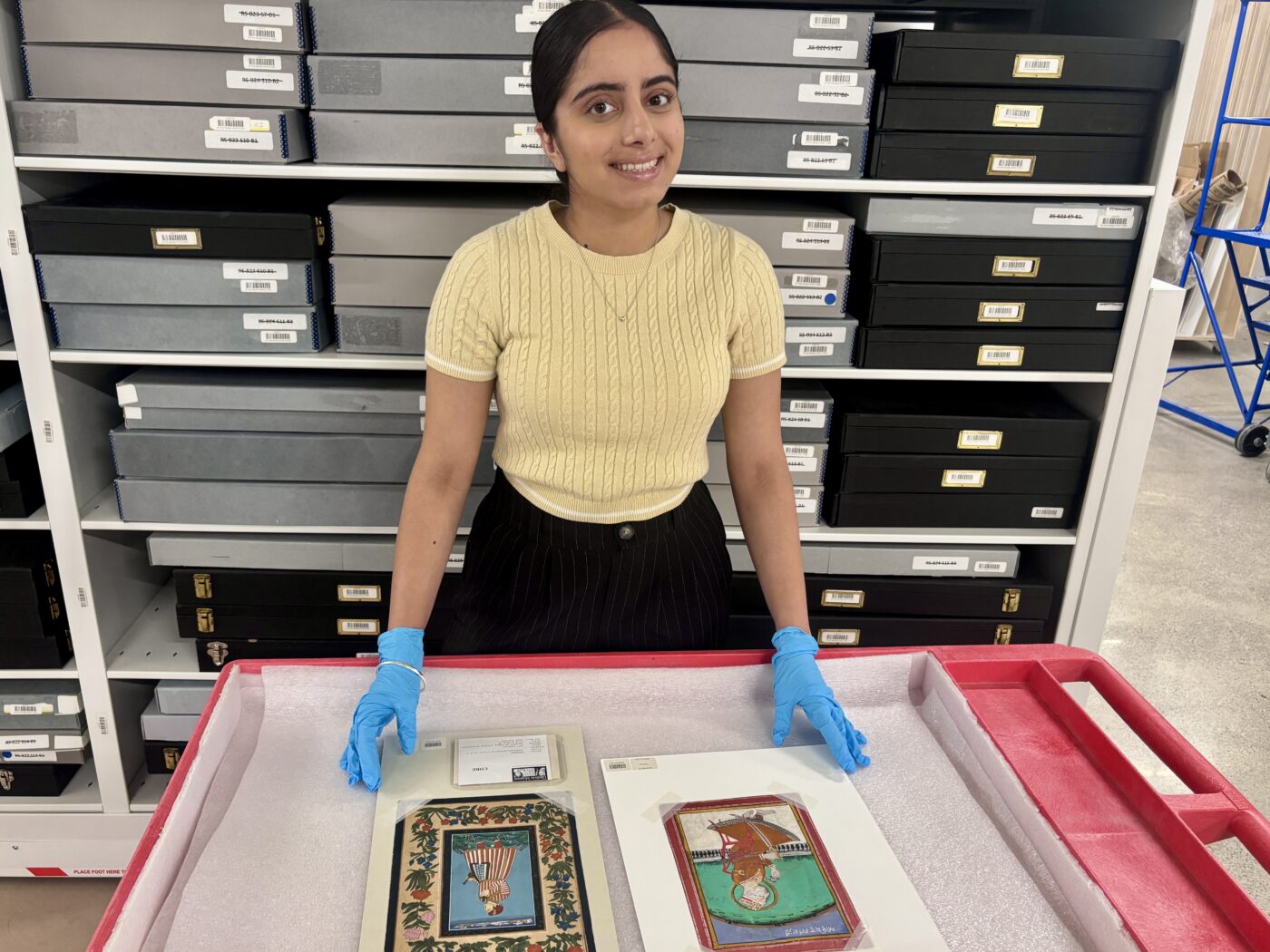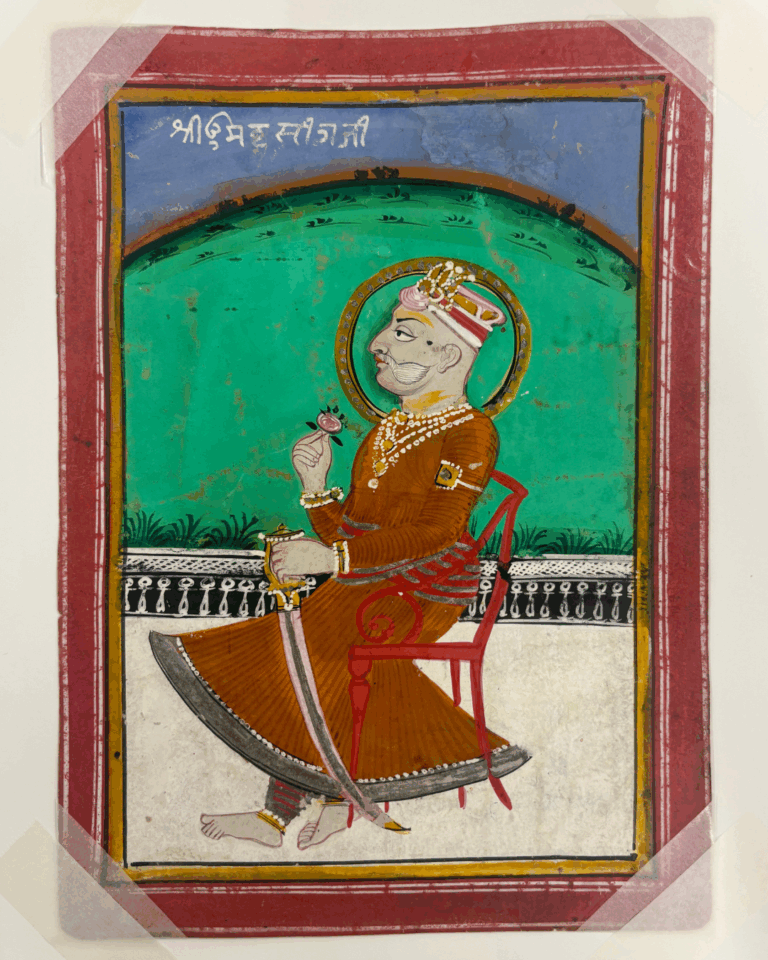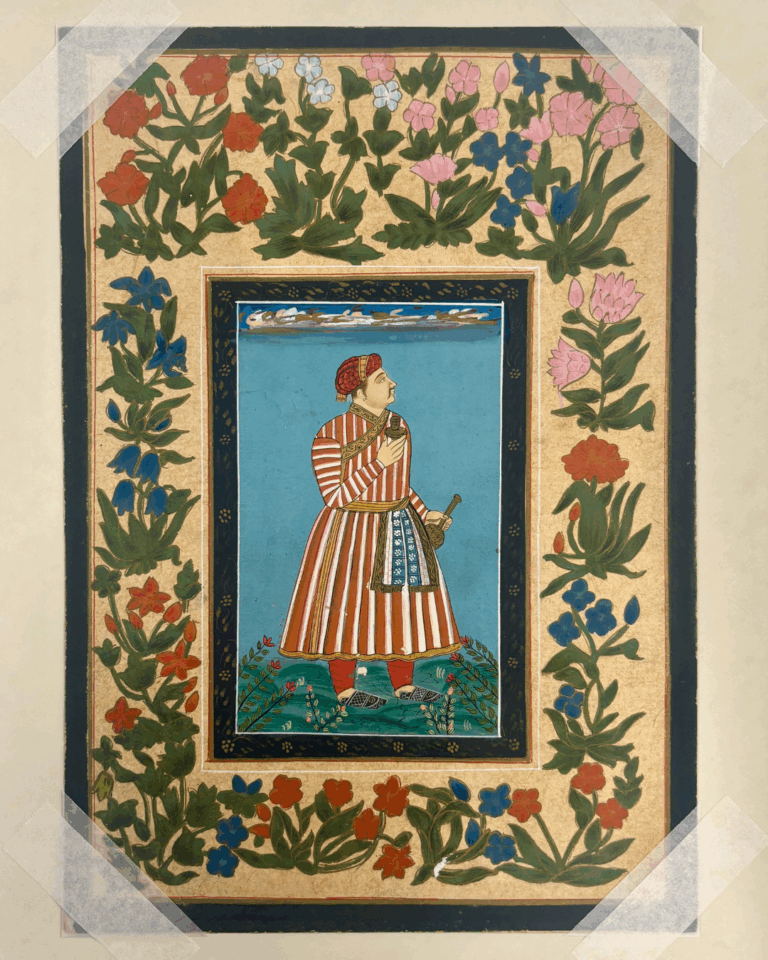This summer, Glenbow was thrilled to launch the JR Shaw Institute for Art in Canada Internship Program. Funded through a generous gift from Shaw Family Foundation, this initiative was established to give students opportunities to work with Glenbow.
During this summer’s program, intern Asees Sekhon had the opportunity to explore Glenbow’s expansive art collection and pursue a research project of personal interest. Drawn to her own cultural heritage and a desire to highlight underrepresented art forms, she chose to study two Indian miniature paintings acquired by Glenbow in 2009. In this Q&A, she shares what she learned and reflects on why these works resonate with her.

Hello, Asees! What drew you to these paintings?
My initial interest in Indian miniature painting goes back to my final year of my undergraduate degree in Art History. In our capstone class, we were given the freedom to choose any topic for a semester-long research project. I wanted to explore something personal – something I could speak about with passion – so I decided to focus on my own heritage. In art history, and especially in North American academia, the focus tends to be on European and North American art. I wanted to shift that focus and look at Indian miniature painting to bring attention to a style that is often overlooked in the West. I spent that semester doing deep research – reading books, collecting articles, and exploring anything I could find related to this style of painting.
I revisited this interest when I started my JR Shaw Institute for Art in Canada Internship with Glenbow. As we began exploring the art collection, I was curious as to whether there were any Indian miniature paintings in the collection. I did some more research and came across these two works.


Can you describe the paintings?
The first painting is Seated Raja in Red English-Style Chair. The word “Raja” means “king” in many South Asian languages. What is particularly interesting about this style of painting is it is quite small – about 8 by 6 inches. Regional stylistic elements and the subject of the painting suggest it originates from Rajasthan, a state in northwestern India. It is painted in gouache (an opaque watercolour paint) on paper.
The second painting is Standing Figure with Two Vessels. It is also fairly small at 10 inches by 7.5 inches and is painted in gouache on paper. This painting is more aligned with the Mughal style, which was a popular style of painting in Northern India under the Mughal Empire in the sixteenth to eighteenth centuries. Inscriptions on the painting suggest it likely comes from Delhi and is based on a portrait of Mughal Emperor Shah Jahan. Shah Jahan, also known as Shah Jahan the Magnificent, ruled India from 1628 to 1658. He was a major patron of Mughal architecture and is best known for commissioning the Taj Mahal in memory of his wife, Empress Mumtaz Mahal.
Who were the artists?
We know the paintings were created by different artists in the twentieth century, though their identities are no longer known. As I mentioned, inscriptions on the paintings and the figures depicted give us some clues about their regional origins.
What can you tell us about the style and traditions these paintings are part of?
The Rajasthani painting reflects a style that originated in seventeenth-century India. This style is usually recognizable through folk elements, vibrant colours, and simple borders – quite different from the Mughal style.
The Mughal painting style emerged earlier, in the sixteenth century. It’s known for highly detailed, ornate borders that often include plant and animal motifs as well as calligraphy. These decorative elements draw the viewer into the framed central image, which is usually a painting of a figure or multiple figures. These paintings were often commissioned by emperors and rulers as a way of asserting power and prestige.
Can you tell us anything about how these works were made?
Yes! One of the more technical aspects is that the artists used extremely fine paintbrushes made from squirrel hair to achieve the intricate detail and precision that defines miniature painting. Most of the time, they crafted these brushes themselves.
How were the paintings acquired by Glenbow?
The paintings were donated to Glenbow in 2009 by Edward and Mariena Schwartz, who purchased them from art dealer Avrom Isaacs. It’s unclear where Isaacs acquired them, but it’s likely they were purchased from other collectors or through art markets in India. These kinds of paintings were often bought and sold through antique and tourist markets, especially in the twentieth century.
Do you think there’s potential for more research into South Asian art at Glenbow?
Definitely. I think this is a really interesting research area. Glenbow has other South Asian pieces, like small statues and objects, that would be worth exploring. There’s so much opportunity to bring more attention to these parts of the collection.
Thank you, Asees!
By exploring Indian miniature paintings in Glenbow’s collection, Asees not only brought new insight to the collection but also highlighted the importance of representing diverse artistic traditions. Her research reminds us that every artwork has a story waiting to be uncovered.
Stay tuned for more stories from Glenbow’s 2025 JR Shaw Institute for Art in Canada interns!
